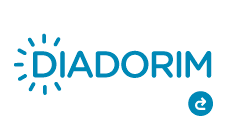AEROBIC EXERCISE TRAINING DURING ADOLESCENCE REVERSES THE METABOLIC DYSFUNCTION INDUCED BY THE LITTLE REDUCTION MODEL
Abstract
Sedentary lifestyle and consumption of high-calorie foods contribute to the development of
individuals with risk factors for non-communicable diseases. Aerobic exercise is one of the
main non-pharmacological strategies in this confrontation. This work aims to evaluate the
effects of moderate-intensity exercise (MIE) on biometric and metabolic parameters of adult
male Wistar rats, programmed for obesity during the lactation period. The litters were
standardized in 9 pups until the 3rd day of life, and later adjusted in Normal Litters (NL), and
Reduced Litters (SL). At 21 days, the offspring were weaned and divided into sedentary
(SED) and exercised (EXE) groups, forming 4 experimental groups: NL-SED, NL-EXE, SL-
SED and SL-EXE. EXE rats performed a moderate-intensity treadmill running protocol from
30 to 60 years old. All groups were euthanized at 120 days. The results showed that the litter
reduction made the animals heavier (p<0.0001), hyperphagic (p<0.001), greater mesenteric fat
stock (p<0.0001), insulin resistant (p=0.0001) and glucose intolerant (p=0.0001), when
compared to equivalent controls. MIE promoted a reduction in body weight (p=0.001) and
mesenteric fat (p<0.0001), better insulin sensitivity (p=0.01) and glucose tolerance (p=0.003).
It is concluded, therefore, that MIE performed in adolescence attenuates the deleterious
effects observed on body composition and glucose metabolism in adult animals, programmed
early for obesity.
Downloads
References
DECLARAÇÃO DE ORIGINALIDADE E DIREITOS AUTORAIS
Declaro que o presente artigo é original, não tendo sido submetido à publicação em qualquer outro periódico nacional ou internacional, quer seja em parte ou em sua totalidade.
Os direitos autorais pertencem exclusivamente aos autores. Os direitos de licenciamento utilizados pelo periódico é a licença Creative Commons Attribution 4.0 (CC BY ): são permitidos o acompartilhamento (cópia e distribuição do material em qualqer meio ou formato) e adaptação (remix, transformação e criação de material a partir do conteúdo assim licenciado para quaisquer fins, inclusive comerciais.

Recomenda-se a leitura desse link para maiores informações sobre o tema: fornecimento de créditos e referências de forma correta, entre outros detalhes cruciais para uso adequado do material licenciado.
















